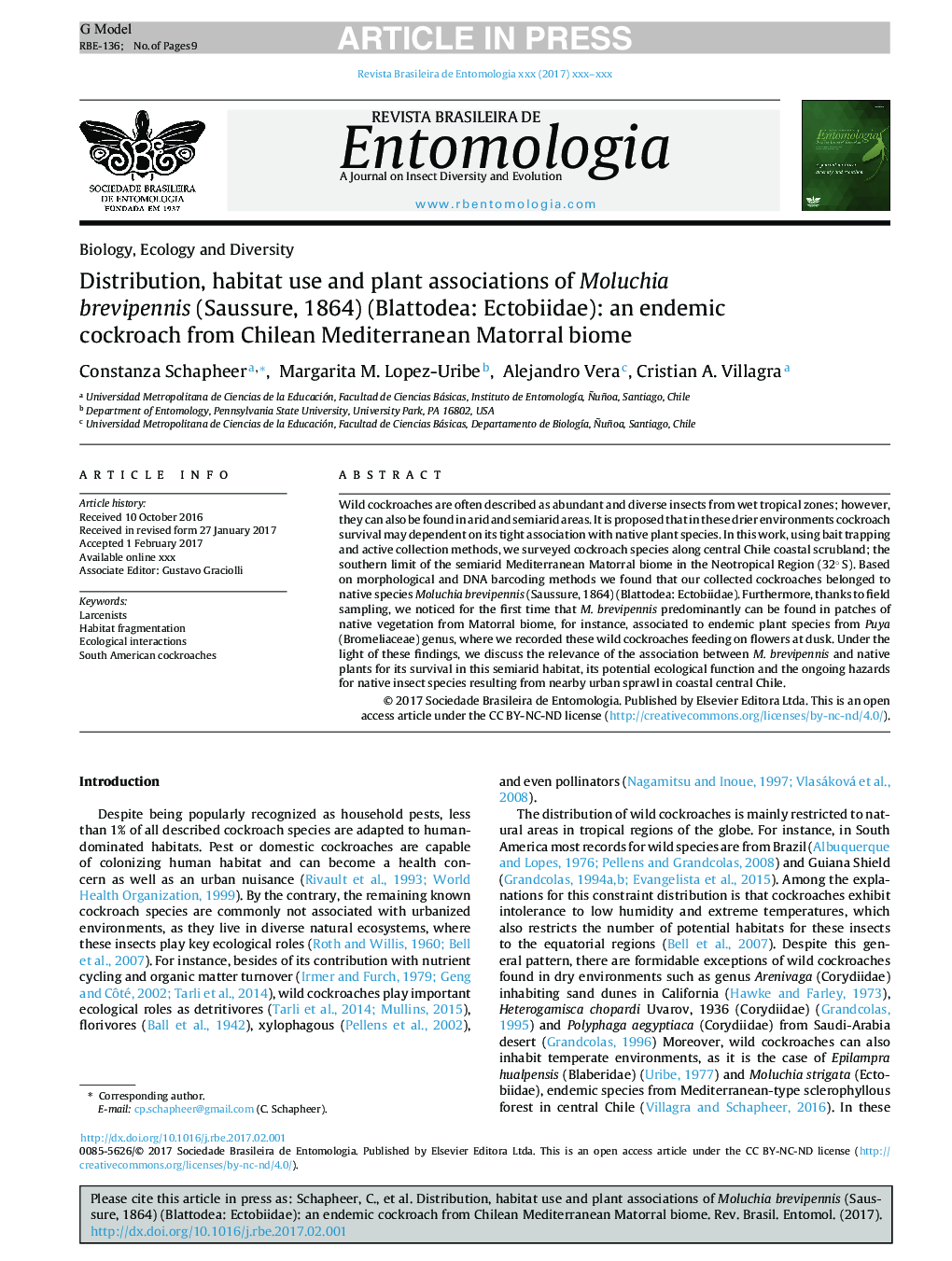| Article ID | Journal | Published Year | Pages | File Type |
|---|---|---|---|---|
| 8877266 | Revista Brasileira de Entomologia | 2017 | 9 Pages |
Abstract
Wild cockroaches are often described as abundant and diverse insects from wet tropical zones; however, they can also be found in arid and semiarid areas. It is proposed that in these drier environments cockroach survival may dependent on its tight association with native plant species. In this work, using bait trapping and active collection methods, we surveyed cockroach species along central Chile coastal scrubland; the southern limit of the semiarid Mediterranean Matorral biome in the Neotropical Region (32° S). Based on morphological and DNA barcoding methods we found that our collected cockroaches belonged to native species Moluchia brevipennis (Saussure, 1864) (Blattodea: Ectobiidae). Furthermore, thanks to field sampling, we noticed for the first time that M. brevipennis predominantly can be found in patches of native vegetation from Matorral biome, for instance, associated to endemic plant species from Puya (Bromeliaceae) genus, where we recorded these wild cockroaches feeding on flowers at dusk. Under the light of these findings, we discuss the relevance of the association between M. brevipennis and native plants for its survival in this semiarid habitat, its potential ecological function and the ongoing hazards for native insect species resulting from nearby urban sprawl in coastal central Chile.
Related Topics
Life Sciences
Agricultural and Biological Sciences
Agricultural and Biological Sciences (General)
Authors
Constanza Schapheer, Margarita M. Lopez-Uribe, Alejandro Vera, Cristian A. Villagra,
